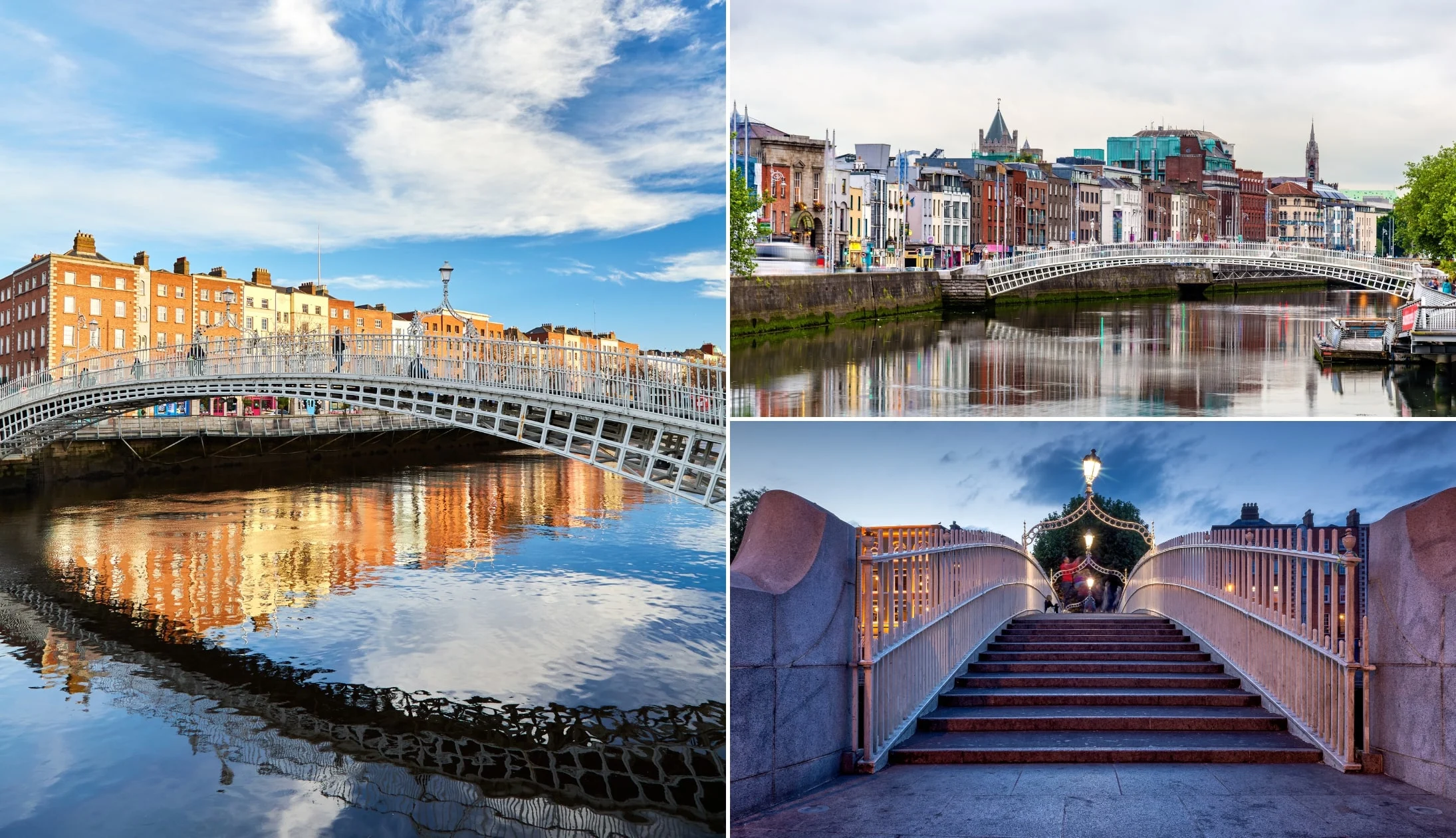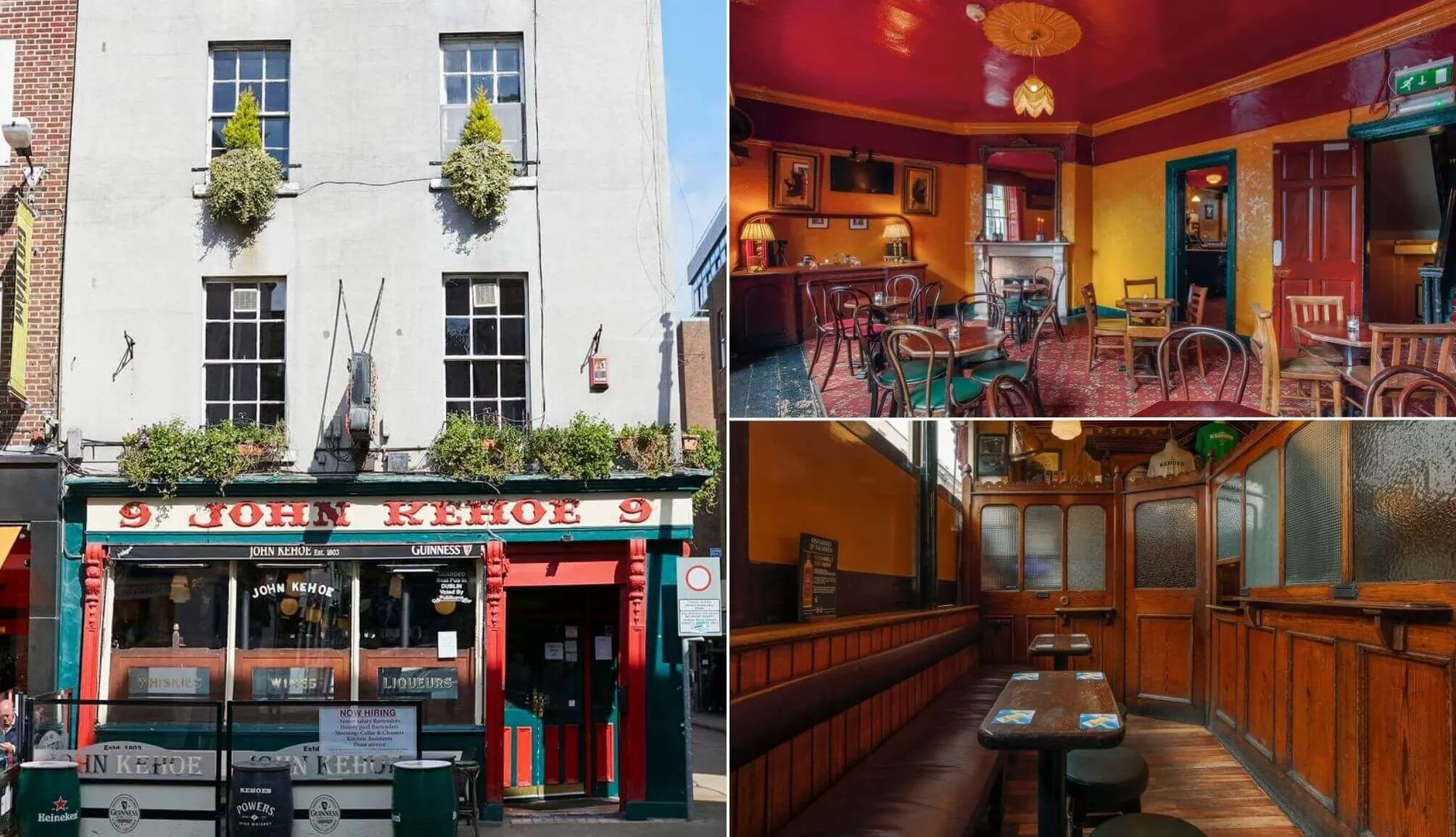It’s fair to say bustling O’Connell Street has seen a lot in its lifetime!
The grand street in central Dublin is ubiquitous with locals and visitors alike (as any traveller who’s taken a taxi or the Airlink Express will tell you!), but it’s had an eventful history too.
Unfortunately, the modern day O’Connell Street, as you’ll discover below, is a mix of bad shops, gaudy casinos and fast-food outlets.
However, this historic street has witnessed countless battles over the years, and it’s home to some history hidden in plain sight.
Some quick need-to-knows about O’Connell Street

Photos via Shutterstock
Although a visit to O’Connell Street in Dublin is fairly straightforward, there are a few need-to-knows that’ll make your visit that bit more enjoyable.
1. Location
Located in central Dublin and just north of the Liffey, O’Connell Street is a wide street with a number of monuments and landmarks. Several bus lines run up and down it throughout the day, as well as the LUAS tram. It’s easy to find on foot wherever you are in central Dublin.
2. A whole lot of history
Originally known as Drogheda Street, then Sackville Street and finally O’Connell Street, it’s a place of serious significance in Irish history. It’s particularly famous for being bombarded during the 1916 Easter Rising and the role that the imposing General Post Office played in that event. All of that we’ll get to a little later!
3. Current state
These days O’Connell Street can be seen for miles around, thanks to the presence of the 390ft-high Spire of Dublin. At ground level, it’s a bustling thoroughfare full of shops, banks and food outlets, though it still attracts many visitors thanks to its dramatic history and the number of monuments to prominent Irish figures of the past.
4. Safety
The modern day O’Connell Street leaves a lot to be desired. You tend to get a lot of dodgy characters hanging around here during the day (so be vigilant). It’s one of the areas in Dublin to avoid late at night as it tends to be chaotic at night when pubs/nightclubs close.
The history of O’Connell Street

Photos in the Public Domain
The history of O’Connell Street in Dublin is an interesting one, and it’s something that many visitors to Dublin fail to delve into prior or during their visit.
Construction
Believe it or not, O’Connell street used to be a narrow residential street that only extended from Parnell Street as far as the Spire’s current location. Then again, this was over 300 years ago!
Henry Moore, 1st Earl of Drogheda, began developing northeast of the lands of the former St. Mary’s Abbey and it was his vision that started what would become O’Connell Street today.
So pleased was he with the street that took it upon himself to name it Drogheda Street. However, it wouldn’t keep that name for long.
When banker and property developer Luke Gardiner purchased much of the old Moore estates in north Dublin in 1714, he had his eyes on Drogheda Street as a place with much potential and a few years later the street began to take the shape we recognise today.
A grander look
From the 1740s and 50s, Gardiner began to develop the Moore estates and after seeing the success of Henrietta Street – Dublin’s first Georgian street – he acquired the upper part of Drogheda Street extending down to Henry Street as part of a land deal.
After demolishing the western side of Drogheda Street, he had created an exclusive elongated residential square 1,000ft long and 150ft wide, thus establishing the scale of the modern-day thoroughfare.
A number of grand new properties began to be built on both sides of the street and with so many huge changes taking place, the street was re-named Sackville Street in honour of Lord-Lieutenant Lionel Sackville, the Duke of Dorset.
The opening of the Carlisle Bridge across the Liffey to the southern quays in 1792 saw its commercial potential then further realised.
The 19th century and commerce
Lower Sackville Street was the main beneficiary of this sudden commercial growth as its terraces suddenly began popping up with retail units and a stark difference between Lower and Upper Sackville Street began to develop.
The townhouses and small businesses of Upper Sackville Street struggled to gain prominence in the shadow of the “broad and handsome” Lower Sackville Street (according to William Makepeace Thackeray).
Upper Sackville Street’s fortunes eventually changed and a number of other prominent buildings began to take shape – the General Post Office in 1814, the Gresham Hotel in 1817 and Delany’s New Mart ‘Monster Store’ in 1853 to name but a few.
It was also during the 19th century that the street began to start being called O’Connell Street locally.
Easter Rising and the Civil War
The General Post Office on O’Connell Street’s western side played a major role in the 1916 Easter Rising and the bullet holes are still visible in its grand columns (one of the more interesting facts about Dublin!).
Slightly macabre I know, but they’re visceral reminders of Ireland’s violent past and do a far better job at visualising the event than any book or TV show could. With the GPO seized by Irish Republicans, O’Connell Street took a bombardment of bombs and bullets from Royal Navy ship Helga.
The street also saw major fighting in 1922 during the Battle of Dublin, that marked the beginning of the Irish Civil War. The fighting cost the lives of at least 80 people and also saw over 280 wounded.
Regeneration and the modern-day
Thanks to the extensive destruction and rebuilding, most of the buildings on O’Connell Street date from the early 20th century, and by 1924 the name was changed officially from Sackville Street to O’Connell Street.
One of the biggest changes to the look of the street took place on the morning of Tuesday, March 8th 1966 when Nelson’s Pillar was destroyed by a powerful explosion.
Fifty years later, the Spire stands in its place, and O’Connell Street looks as modern as any European thoroughfare, but it never forgets the ghosts of its turbulent past.
Things to do near O’Connell Street
Although a visit to O’Connell Street isn’t one of the more popular things to do in Dublin, there’s plenty to see here.
From bullet holes in buildings and the stunning GPO to the many monuments and the monumental Spire, there’s lots to see and do.
1. See the O’Connell monument

Photos via Shutterstock
Started in 1866 and completed in 1883, the O’Connell monument has stood proudly at the base of O’Connell Street for over 130 years.
Tall and cloaked in bronze, O’Connell was a politician and campaigner who helped secure Catholic Emancipation in 1829 and earned the nickname ‘The Liberator’.
I’d want a statue too if I had a nickname as cool as that!
2. Look for hidden history

Photos via Shutterstock
I mentioned earlier the bullet holes in the General Post Office but they’re not the only visible scars of 1916 (but definitely take a look at them!).
Head over to the O’Connell monument and take a closer peek at his arms – you’ll notice the bullet-shaped pockmarks that were likely unleashed by British army soldiers.
The angels beneath him sport these tiny scars of war too.
3. Gaze up at the Spire

Photos via Shutterstock
The Spire of Dublin is hard to miss and it’s Dublin architecture at its quirkiest. This enormous steel monument can be seen from many parts of the city, thanks to its impressive 390-foot height.
The installation of The Spire started in late 2002 and it wasn’t finished until January 2003. You can admire it from afar or you can stand beside it and gaze up.
4. The GPO museum tour

Photo by Madema (Shutterstock)
Immerse yourself in modern Irish history, and discover the story behind this magnificent neo-classical façade and its towering statues.
Visit Dublin’s famous GPO building and uncover how it played a key role in the 1916 Easter Uprising, and see for yourself the Proclamation of the Irish Republic.
The tour here is outstanding and it’s one of the best things to do in Dublin when it’s raining.
5. The Ha’penny Bridge

Photos via Shutterstock
You’ll find the Ha’penny Bridge a short stroll from O’Connell Street. It was Dublin’s original tool booth and it’s crossed thousands of times per day.
This is a real bit of ‘old-Dublin’ and it’s one of the more famous landmarks in Ireland.
6. Food and trad pubs

Photo left © Tourism Ireland. Others via Kehoe’s
Located just north of the famous Temple Bar area, there’s a plethora of pubs, bars and restaurants to get stuck into when you’ve finished exploring O’Connell Street. Here are some guides to nip into:
- 22 of the best restaurants in Dublin
- 7 of the oldest pubs in Dublin
- 10 mighty pubs in Dublin with music
FAQs about O’Connell Street in Dublin
We’ve had a lot of questions over the years asking about everything from ‘What happened in O’Connell street?’ to ‘What shops are on O’Connell street?’.
In the section below, we’ve popped in the most FAQs that we’ve received. If you have a question that we haven’t tackled, ask away in the comments section below.
What is there to see on O’Connell Street?
You can admire the spire. See the many monuments. Visit the GPO. Or, if you fancy, grab some food or a drink.
Is O’Connell Street safe?
It depends. You’ll see plenty of ‘dodgy’ characters around O’Connell Street in Dublin. So, keep your wits about you. We’d also recommend you avoid it when the pubs kick out.
Keith O’Hara has lived in Ireland for 35 years and has spent most of the last 10 creating what is now The Irish Road Trip guide. Over the years, the website has published thousands of meticulously researched Ireland travel guides, welcoming 30 million+ visitors along the way. In 2022, the Irish Road Trip team published the world’s largest collection of Irish Road Trip itineraries. Keith lives in Dublin with his dog Toby and finds writing in the 3rd person minus craic altogether.

